Holiday Baking Essentials in Swedish Kitchens
11 min read Discover essential ingredients and tools for authentic Swedish holiday baking, highlighting festive pastries and traditional culinary favorites. July 09, 2025 12:05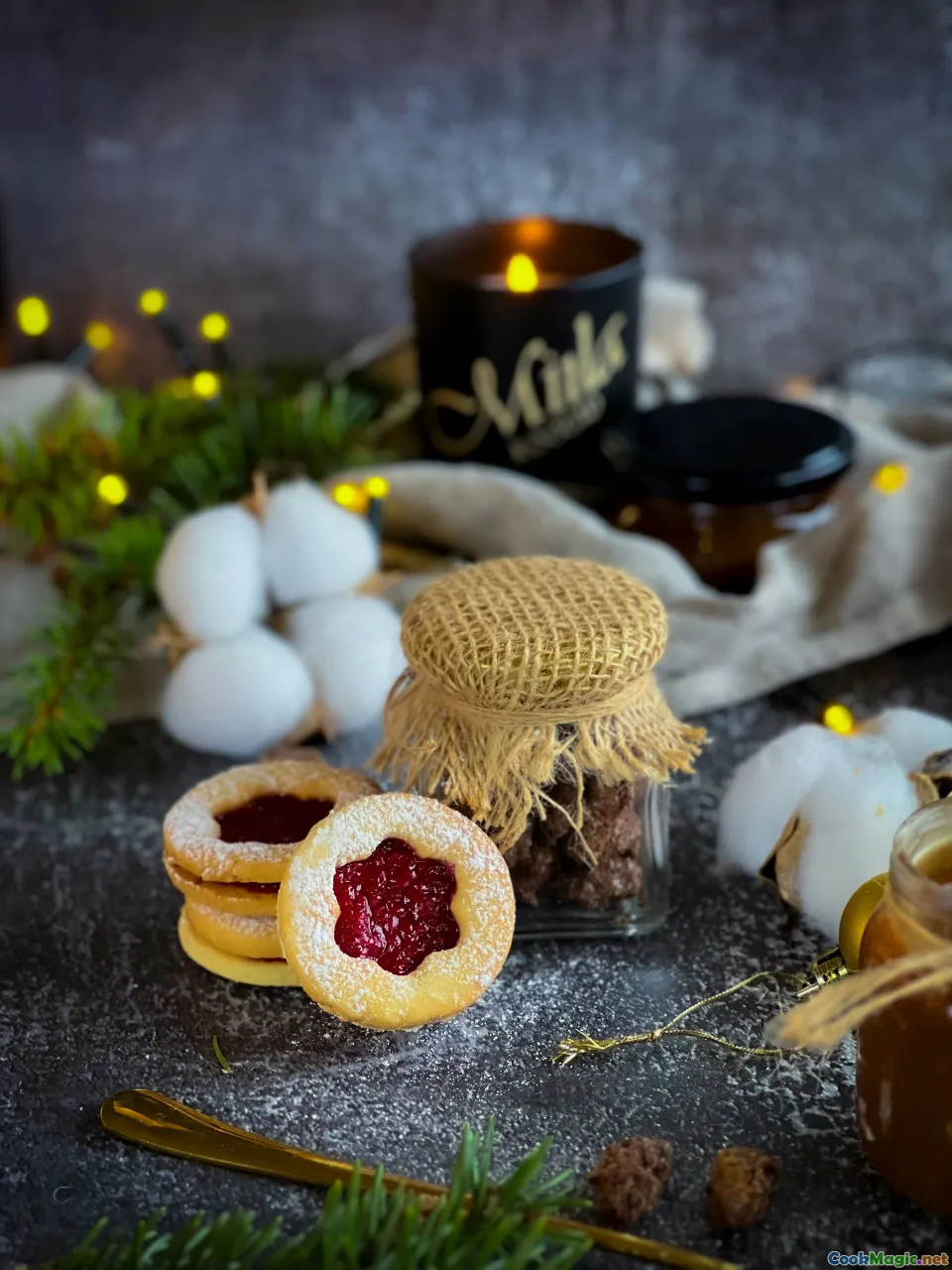
Holiday Baking Essentials in Swedish Kitchens
As the winter days grow shorter and the air turns crisply cool, Swedish households start their cherished holiday baking traditions. The aroma of freshly baked pepparkakor (gingerbread cookies), the warmth of saffron-infused lussekatter, and the rich scent of mulled wine fill the air, creating an irresistible atmosphere of anticipation and comfort. In Sweden, baking is more than just a culinary task — it’s a time-honored ritual woven into the fabric of family life, culture, and history.
Whether you are a seasoned baker or a curious enthusiast eager to explore Swedish holiday sweets, understanding the essentials is key to capturing the authentic spirit of Swedish festive baking. From carefully sourced spices to traditional baking tools, each element plays a vital role in creating those perfect, melt-in-your-mouth treats reminiscent of snowy landscapes and cozy fireplaces.
Let's embark on a flavorful journey through Swedish holiday baking essentials, blending practical tips with stories that breathe life into these beloved traditions.
The Heart of Swedish Holiday Baking: Traditional Ingredients

Swedish holiday baking is distinguished by a harmonious marriage of warm spices, natural sweetness, and fragrant herbs. These ingredients evoke images of snowy vistas and lively markets, where vendors display their finest spices and dried fruits.
Saffron (Kronar)
Nothing symbolizes Swedish holiday festivities quite like saffron. Saffron’s golden hue and distinctive floral aroma transform simple breads into a luxurious feast for the senses. Traditionally, saffron is infused in warm milk or butter to release its deep flavors, a crucial step when preparing lussekatter. These saffron-infused buns are indispensable for Saint Lucia Day on December 13th, bringing both tradition and a gentle glow to winter mornings.
Cardamom and Cinnamon
Swedes have a soft spot for aromatic spices like cardamom and cinnamon, often used interchangeably in pastry doughs, buns, and cookies. Cardamom’s slightly citrusy, spicy note complements the sweetness of baked goods, while cinnamon adds warmth. When combined with sugar and butter, these spices create a comforting aroma that envelops the entire kitchen.
Dried Fruits and Nuts
Dried figs, prunes, and dried apples are common fillers in fruit breads and festivities such as julkaka (Christmas cake). Nuts like almonds, hazelnuts, and walnuts are chopped into dough or sprinkled atop baked goods for a flavorful crunch.
Personal insight: My grandmother always kept a jar of saffron-infused sugar for topping her Christmas buns—they glistened with golden sparkle and smelled like childhood memories.
Essential Equipment for Swedish Holiday Baking
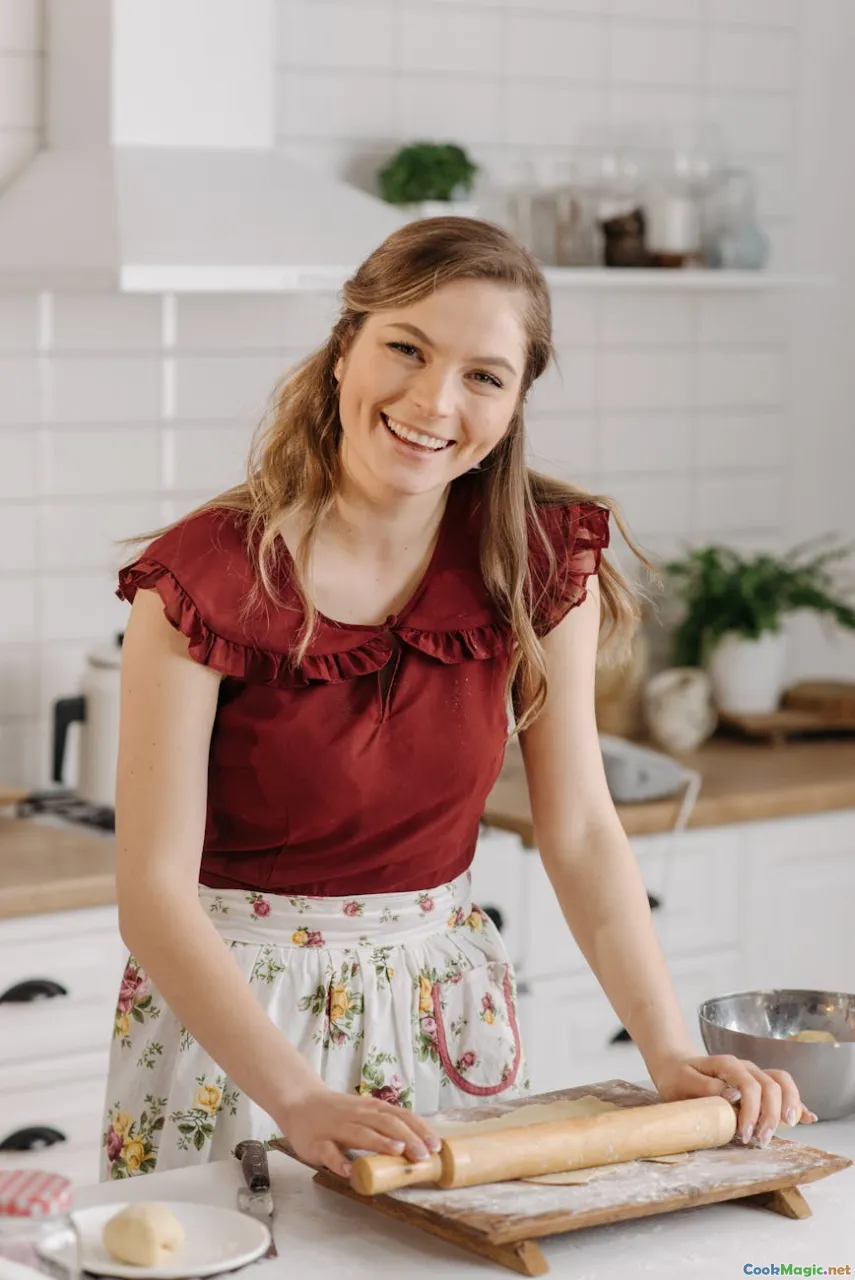
Having the right tools can make all the difference in achieving authentic Swedish holiday confections. While many recipes are straightforward, specific equipment ensures consistent results and helps replicate traditional textures.
Kombirulle (Kneading Board)
A sturdy, well-floured baking or kneading board is essential for rolling doughs smoothly, especially for buttery puff pastry or sweet breads like ljussekatter. Wooden boards are preferred for their natural feel and durability.
Ångpanne (Sieve)
A fine sieve is instrumental for sifting flour, spices, or powdered sugar, ensuring a smooth, light texture. It’s especially important when dusting cookies or decorating holiday treats.
Special Molds and Forms
Swedish baking often involves beautifully shaped cookies and bread. Traditional cookie molds—such as star, heart, or tree shapes—are used for pepparkakor. Authentic lussekatter are traditionally shaped into an S or figure-eight and often stamped with a raisin or glaze for face features.
Pastry Brush and Decorative Tools
To achieve that glossy finish on baked goods, a natural-bristle pastry brush is invaluable. Sweeter treats like Christmas bread are often brushed with egg wash or butter for a beautiful shine.
Classic Swedish Holiday Breads and Cookies
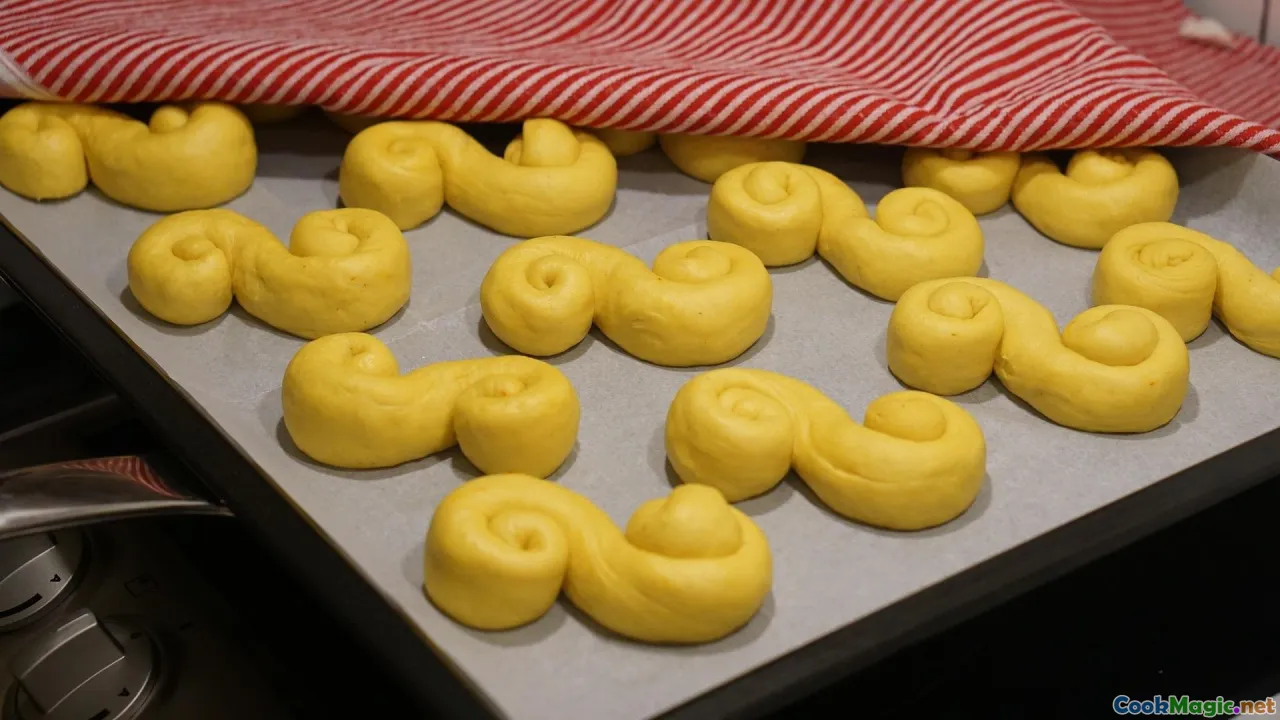
The cornerstone of Swedish holiday baking lies in its beautifully crafted breads and cookies that are both visually striking and rich in flavor.
Lussekatter (Saffron Buns)
Lussekatter are golden, saffron-infused buns shaped into cute, twisted figures. The aroma of saffron and cardamom in these soft, fluffy buns is intoxicating. Traditionally served during St. Lucia celebrations, these buns are a symbol of the arrival of winter light.
Tip: Add a single raisin or a marzipan piece in the center of each bun before baking for a delightful surprise.
Pepparkakor (Gingerbread Cookies)
Thin, crisp, and spiced, pepparkakor are essential Christmas ethers in Swedish homes. Often cut into whimsical shapes like stars, hearts, and gingerbread men, they set the festive mood.
Pro tip: Roll the dough thinly—about 2 mm—and let the cookies cool on a wire rack for maximum crispness.
Krumkake (Waffle Cookies)
Flex your baking muscle with traditional krumkake, a delicate waffle shell rolled into cones or cylinders, perfect for holding whipped cream and jam. The batter contains butter, sugar, eggs, flour, and a pinch of cardamom, cooked on a patterned iron that leaves beautiful embossed designs.
Lussebullar (Saffron-Infused Buns)
In the dark days leading up to Christmas, Lussebullar grace many Swedish tables. Their rich aroma permeates kitchens, evoking cozy scenes of family baking together.
Baking Tips and Tricks for Authenticity
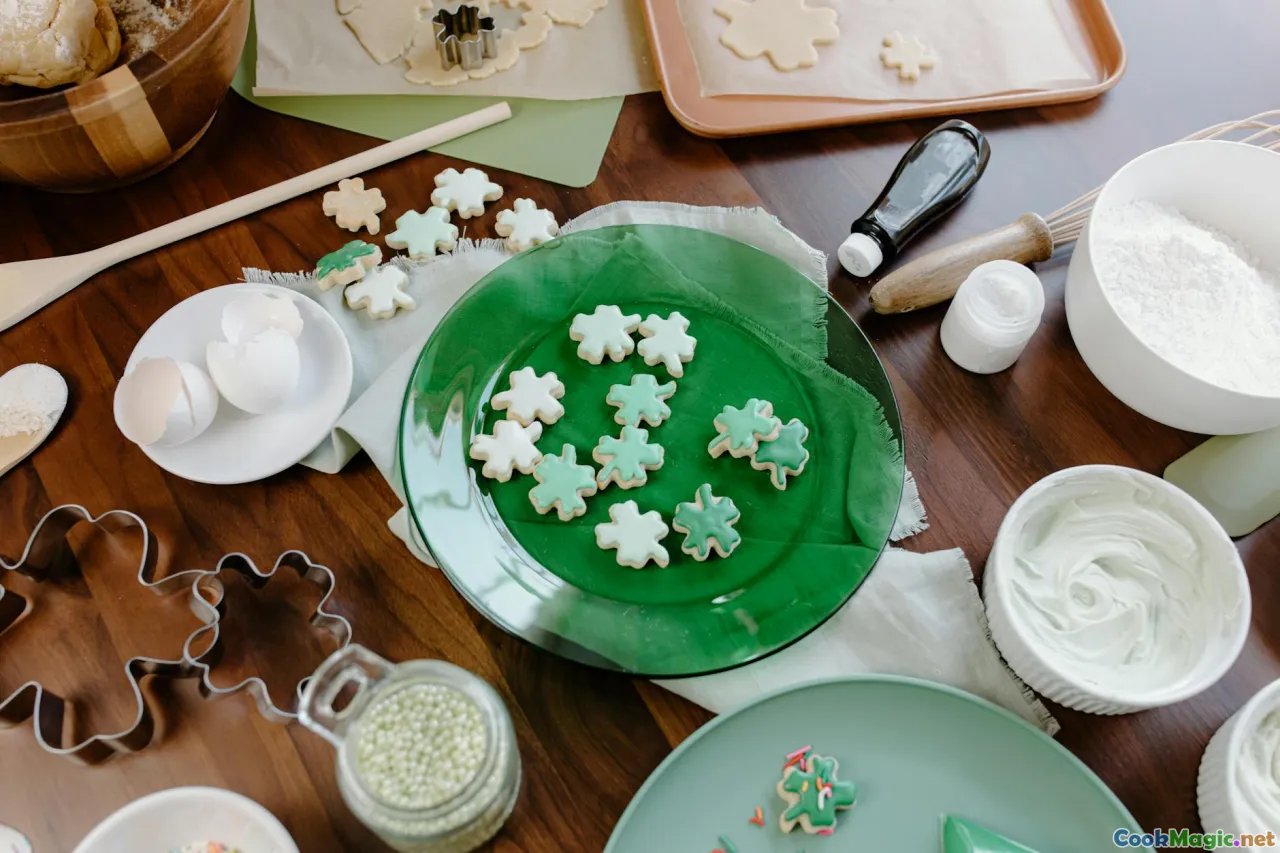
Achieving that authentic Swedish holiday feel involves more than just following recipes; it’s about embracing specific techniques and cultural nuances.
Infuse Your Spices Properly
To extract full flavor, toast spices lightly before grinding or infusing them in liquids. For saffron, soak just a few threads in warm milk until vividly golden.
Maintain Cold Doughs
Many Swedish pastry recipes favor cold doughs—especially for puff pastry or cookies—to ensure tender, flaky results. Chill your dough for at least an hour before shaping.
Precision in Shaping
Detailed shaping of lussekatter and other cookies isn’t just about looks—it impacts texture and even baking times. Use molds or hand-shaping techniques to get those traditional, charming forms.
Decorate with Love
Decorative touches such as icing, raisins, or powdered sugar elevate the presentation and keep the festive spirit alive. A sprinkle of powdered sugar on pepparkakor mimics fresh snow!
Patience and Tradition
Many Swedish baking traditions are slow-paced but rewarding. Take time to knead, rest, and patiently perfect each piece—the aroma of baking bread and cookies is part of the holiday magic.
Personal Stories and Cultural Significance
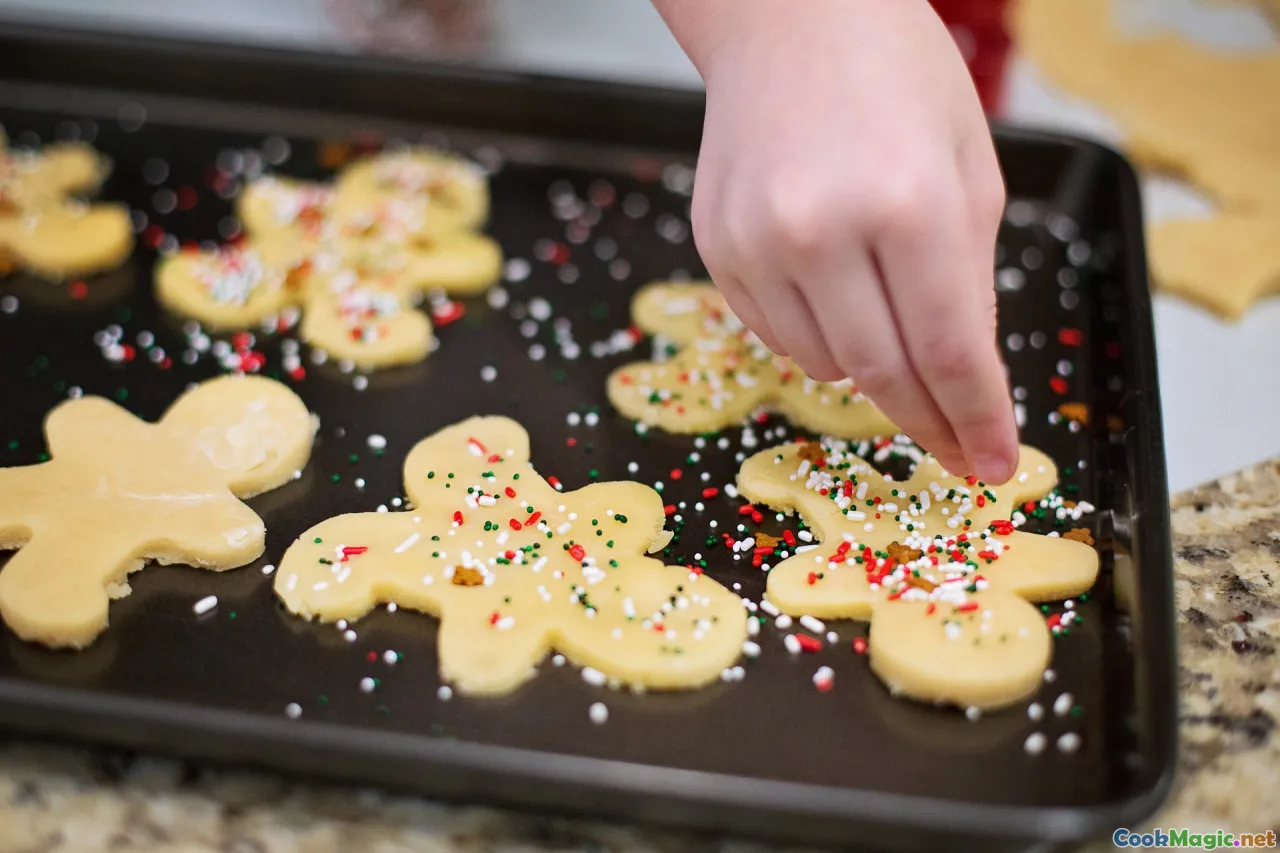
Growing up in a small village in Jämtland, December mornings always began with the fragrant aroma of saffron buns baking in the oven. My grandmother’s meticulous attention to detail made each bun a piece of artistry, crowned with those tiny raisins that resembled twinkling stars.
Swedish holiday baking extends beyond the taste; it’s about storytelling, community, and memory-sharing. Sitting around a large table with freshly baked cookies, singing traditional carols, and recounting stories from childhood creates bonds that tie generations together.
In Sweden today, towns and cities still host festive baking workshops illustrating these traditions, fostering a collective sense of identity and pride. It’s common to exchange homemade treats during Advent, turning neighborly bonds into sweet, tangible expressions of care.
Embracing the Swedish Baking Spirit
Incorporating these essentials into your holiday baking repertoire not only brings you closer to Swedish traditions but also invites a world of warmth, joy, and nostalgia into your home. When crafting saffron buns or crunchy gingerbread, remember—each ingredient and every delicate detail carries the spirit of centuries of festive joy.
So preheat your oven, gather your spices, and let the aroma of Swedish holiday baking fill your home with memories and magic. Whether you’re baking alongside family or creating a new tradition, these treats will surely become treasured parts of your own holiday story.









